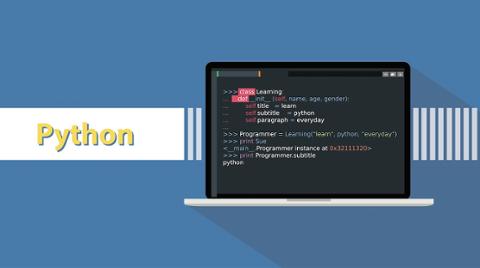Python is an immensely popular programming language that draws a lot of buzz, but it generally doesn’t take the top slot on various rankings of the world’s most popular programming languages. Instead, C, JavaScript, or Java tend to take number one, with Python always in a runner-up position.
But that could change, at least with regard to the much-watched TIOBE Index. Python now occupies TIOBE’s third slot, and it’s closing the gap that separates it from Java (in second place). If it continues to maintain its momentum (and there’s no reason why it shouldn’t, theoretically), it could eventually take the number-one slot away from C.
“Since Java is approaching its all time low since 2001, Python and Java are getting pretty close,” read the note accompanying TIOBE’s October update. “The gap is now less than 1.3%. Since the start of the TIOBE index, C and Java have always held the 2 top positions. So it would be a unique event, if Python would reach position #2. Let's see what will happen the next few months.”
Every popular-language ranking has its own methodology. TIOBE draws in data from a number of aggregators and search engines, including Google and YouTube. For a language to rank, it must be Turing complete, have its own Wikipedia entry, and earn more than 5,000 hits for +”<language> programming” on Google. Critics like to argue that TIOBE is a better measure of a language’s “buzz” than its actual usage, and perhaps they have a point; but it’s still useful as a way to monitor what the technology industry thinks about certain languages, especially the smaller ones on the rise (or decline).
As we’ve covered many times before, there’s no mystery behind Python’s climb up TIOBE (or any other programming-language ranking). Long an ultra-popular generalist language, Python has been making significant inroads into highly specialized and increasingly popular technology subindustries, including data science and machine learning. With regard to those technical segments, companies and development teams realize that building in Python gives them access to a very large pool of skilled technologists, whereas they might need to really hunt for specialists in more obscure languages.
It will be interesting to see if Python manages to climb other organizations' popular-language rankings (such as RedMonk's and StackOverflow's) over the next year, as well.
If you’re totally new to Python, start by heading over to Python.org, which offers a handy beginner’s guide. For those of you who like to learn via video (and there are quite a number of you), Microsoft has a video series, “Python for Beginners,” with dozens of lessons (most under five minutes in length; none longer than 13 minutes). As you might expect, given the language’s ubiquity, there’s also a variety of Python tutorials and books (some of which will cost a monthly fee) that will teach you the nuances of the language—and don’t forget your IDEs.



